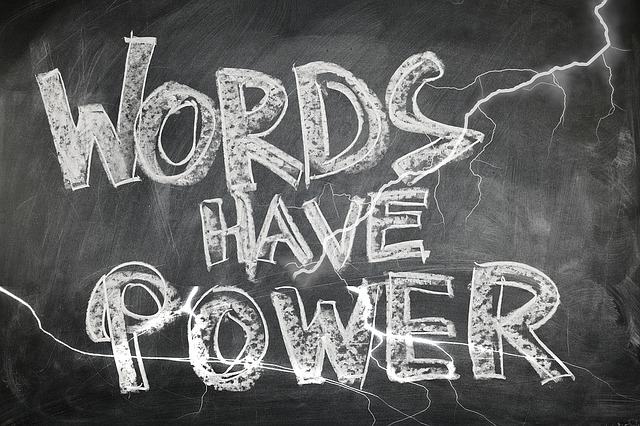List of Strong Verbs: 300 Powerhouse Words for Nonfiction Writers
You know the feeling–you’re working on a piece and the words just seem flat. Don’t worry, you’re not alone. Have you ever wondered how to inject some excitement into your prose without going overboard?
One of the secrets to making your writing more engaging is using strong verbs. They add vigor and clarity, transforming your work into a captivating read.
In this comprehensive guide, we’ve compiled a list of 300 strong verbs divided into six groups to punch up your work. But we won’t stop there. We’ll also provide tips on how to use them effectively so you can make the most of their power.
Our goal is to help you create more engaging, dynamic, and vivid pieces that will leave your nonfiction readers feeling both informed and entertained.
So, buckle up and get ready to dive into the world of strong verbs. By the time you’re done with this post, you’ll have a treasure trove of linguistic gems to enhance your nonfiction writing.
Let’s go!
300 Strong Verbs to Elevate Your Nonfiction Writing
As a nonfiction writer, your choice of verbs can make all the difference in the world. Strong verbs not only help you convey your message more effectively, but they also add precision to your writing.
Below, I’ve compiled a list of 300 strong verbs, divided into six groups, that’ll take your nonfiction writing to new heights. They’ll help you add depth and dimension to your writing:
Action Verbs
Action verbs are your best friends when it comes to keeping your reader’s attention. They help you convey movement and energy–making your writing more dynamic.
By incorporating these verbs into your nonfiction work, you’ll create a stronger connection with your readers and invite them to experience the action alongside you.
Whether you’re writing about a historical event, a scientific discovery, or a personal experience, action verbs can are particularly useful when you want to add pace and urgency to your writing, making your narrative more gripping and exciting.
Here’s are some action-packed verbs that’ll take your nonfiction writing to the next level:
- Accelerate
- Advance
- Amble
- Bolt
- Bounce
- Bound
- Capture
- Charge
- Climb
- Dash
- Devour
- Dive
- Emerge
- Evolve
- Extinguish
- Flee
- Flinch
- Forge
- Glide
- Grapple
- Hover
- Hurdle
- Hustle
- Ignite
- Inflate
- Invigorate
- Jolt
- Juggle
- Jump
- Kindle
- Knock
- Leap
- Lunge
- March
- Muster
- Navigate
- Nurture
- Oscillate
- Outrun
- Plunge
- Propel
- Quicken
- Quiver
- Race
- Revolve
- Surge
- Swerve
- Thrive
- Traverse
- Unleash
- Uproot
- Vanish
- Vault
- Whirl
- Wrestle
- X-ray (as in examining)
- Yield
- Zigzag
- Zip
- Zoom
Descriptive Verbs

Descriptive verbs play a crucial role in making your nonfiction writing come alive. They help you paint a vivid picture in your reader’s mind, allowing them to fully grasp the essence of your message.
When you use descriptive verbs effectively, your readers will feel like they’re right there with you, experiencing your story firsthand.
These verbs add depth, clarity, and engagement to your writing, making it more relatable and appealing. They can turn a mundane description into a captivating one, capturing your reader’s imagination and holding their interest.
The following descriptive verbs are perfect for when you want to showcase the finer details or create an immersive atmosphere:
- Absorb
- Adorn
- Billow
- Blossom
- Blur
- Cascade
- Churn
- Crumble
- Dapple
- Disperse
- Drizzle
- Emanate
- Engulf
- Flare
- Flicker
- Flutter
- Glint
- Glisten
- Gnarl
- Hiss
- Hover
- Illuminate
- Infuse
- Intertwine
- Jostle
- Jumble
- Jumble
- Kindle
- Knot
- Linger
- Loom
- Melt
- Murmur
- Nourish
- Nudge
- Ooze
- Oscillate
- Permeate
- Pulsate
- Quake
- Quench
- Radiate
- Ripple
- Saturate
- Shimmer
- Swirl
- Tangle
- Throb
- Undulate
- Unfurl
- Veer
- Vibrate
- Waver
- Wither
- Wobble
- Wrinkle
- Xerox (as in duplicate)
- Yield
- Zest
- Zigzag
Persuasive Verbs
Persuasive verbs are the secret sauce that can elevate your nonfiction writing from good to great. They’re the key to convincing your readers, swaying their opinions, and inspiring them to take action.
By using persuasive verbs effectively, you’ll be able to make a compelling case for your ideas, while also adding credibility and authority to your work.
Whether you’re writing a persuasive essay, an op-ed piece, or a call-to-action, these verbs will help you communicate your message in a powerful and influential manner.
They can also be used subtly in your writing to emphasize specific points or to steer your readers towards a particular conclusion.
Here’s a collection of persuasive verbs that will help get there quickly:
- Advocate
- Affirm
- Amplify
- Augment
- Bolster
- Buttress
- Champion
- Coax
- Compel
- Convince
- Corroborate
- Counter
- Debunk
- Defend
- Demystify
- Emphasize
- Endorse
- Enlist
- Foment
- Fortify
- Foster
- Galvanize
- Garner
- Generate
- Highlight
- Hone
- Illustrate
- Implore
- Inspire
- Instigate
- Justify
- Kindle
- Lend
- Magnify
- Mobilize
- Motivate
- Negotiate
- Nudge
- Nurture
- Optimize
- Overcome
- Persuade
- Pledge
- Propel
- Quash
- Quell
- Rally
- Reassure
- Refute
- Reinforce
- Steer
- Stimulate
- Sway
- Tackle
- Tout
- Uncover
- Underscore
- Validate
- Verify
- Vouch
Emotional Verbs

Emotional verbs hold the power to evoke deep feelings and emotions in your readers. They can make your nonfiction writing more relatable and memorable.
When used effectively, emotional verbs help you connect with your readers on a deeper level, drawing them into your story and making them care about the outcome.
These verbs are particularly useful in personal essays, memoirs, or any nonfiction writing where you want to convey the emotional landscape of your story. They can also be used to create empathy, build tension, or provide insight into your inner thoughts and feelings:
- Abhor
- Adore
- Alleviate
- Bewilder
- Blush
- Cherish
- Commiserate
- Console
- Crave
- Delight
- Despair
- Dread
- Enamor
- Enthral
- Exasperate
- Fascinate
- Fret
- Fume
- Grieve
- Grumble
- Hesitate
- Hope
- Infatuate
- Inspire
- Intrigue
- Jeer
- Jolt
- Kindle
- Lament
- Loathe
- Marvel
- Mollify
- Mourn
- Nourish
- Nurture
- Nuzzle
- Obsess
- Overwhelm
- Panic
- Placate
- Provoke
- Quell
- Quicken
- Rejoice
- Relish
- Resent
- Savor
- Seethe
- Soothe
- Taunt
- Tremble
- Unnerve
- Uplift
- Venerate
- Vex
- Wince
- Worship
- Yawn
- Yearn
- Zeal
Verbs for Comparison and Contrast
Verbs for comparison and contrast are essential tools for nonfiction writers. These verbs allow you to highlight similarities and differences between ideas, objects, or situations–making your writing more insightful and engaging.
Comparison and contrast verbs are particularly useful in essays, articles, and other nonfiction writing where you need to analyze, evaluate, or make connections between different aspects of your topic.
They can be used to present contrasting viewpoints, emphasize key points, or simply to illustrate the complexity of an issue.
Here’s a list of verbs for comparison and contrast to help you make your nonfiction writing more analytical and thought-provoking:
- Align
- Approximate
- Balance
- Blend
- Coincide
- Commensurate
- Compare
- Conform
- Congruent
- Connect
- Contest
- Contrast
- Converge
- Coordinate
- Correlate
- Counteract
- Deviate
- Differentiate
- Discriminate
- Disparage
- Distinct
- Diverge
- Divert
- Dominate
- Dwarf
- Echo
- Eclipse
- Elapse
- Emanate
- Emphasize
- Emulate
- Enhance
- Equal
- Escalate
- Exceed
- Impinge
- Integrate
- Intersect
- Merge
- Mimic
- Offset
- Oppose
- Outperform
- Outshine
- Overlap
- Overshadow
- Parallels
- Resemble
- Rival
- Shadow
- Simulate
- Supersede
- Surpass
- Synchronize
- Tally
- Transcend
- Trump
- Undermine
- Unify
- Vie
Verbs for Analysis and Explanation

Verbs for analysis and explanation also play a crucial role in nonfiction writing. They help you present complex ideas, arguments, or data in a clear and easily understandable manner.
These verbs allow you to dig deep into your topic, offering your readers a more detailed and nuanced understanding of your subject.
Using these verbs will enable you to effectively break down concepts, interpret information, and communicate your findings to your readers. They’ll also contribute to the overall clarity and coherence of your writing–making it more enjoyable to read and easier to follow:
- Analyze
- Articulate
- Ascertain
- Assess
- Attribute
- Authenticate
- Break down
- Categorize
- Clarify
- Classify
- Comprehend
- Consolidate
- Contemplate
- Convey
- Decode
- Deduce
- Define
- Delve
- Demystify
- Describe
- Dissect
- Distinguish
- Divide
- Elaborate
- Elicit
- Elucidate
- Enumerate
- Establish
- Evaluate
- Examine
- Explain
- Expound
- Extrapolate
- Ferret out
- Identify
- Illuminate
- Illustrate
- Infer
- Interpret
- Investigate
- Isolate
- Itemize
- Outline
- Parse
- Pinpoint
- Plumb
- Ponder
- Postulate
- Probe
- Reflect
- Resolve
- Reveal
- Review
- Scrutinize
- Separate
- Specify
- Synthesize
- Systematize
- Theorize
- Unravel
7 Tips for Using Strong Verbs in Nonfiction Writing
Now that you’ve got a hefty list of strong verbs, here are some tips for using them effectively:
- Choose the right verb for the context. Strong verbs can’t work their magic if they don’t fit the situation.
- Balance strong verbs with other language elements. Your writing should have a nice mix of strong verbs, adjectives, and other parts of speech.
- Avoid overusing strong verbs. While they’re great, too many strong verbs can make your writing feel overwhelming.
- Use strong verbs to create vivid imagery. By choosing verbs that evoke specific images in your readers’ minds, you can make your nonfiction writing more engaging and memorable.
- Replace weak or generic verbs with more precise ones. If you find yourself using plain-sounding words like “do,” “make,” or “go,” consider whether a stronger, more specific verb might better convey your meaning.
- Vary your verbs throughout your writing–using a diverse range of strong verbs helps maintain your readers’ interest and prevents your writing from becoming monotonous.
- Consider the tone and style of your writing. While strong verbs are generally a good choice, make sure they align with the overall tone and style you’re aiming for in your nonfiction piece. Some verbs may be too informal or jarring for certain contexts.
In Conclusion
And there you have it–300 strong verbs to spice up your nonfiction writing. By now, you should have a solid understanding of the power that strong verbs hold in nonfiction writing.
With these versatile verbs at your disposal, you’ll be equipped to breathe new life into your work and create pieces that are engaging, dynamic, and vivid.
But don’t forget, using strong verbs effectively is an art in itself. Make sure to choose the right verb for the context, balance strong verbs with other language elements, and avoid overusing them.
As a nonfiction writer, your mission is to inform, educate, and inspire your readers. By incorporating strong verbs into your writing, you’ll not only make your prose more captivating but also build trust and credibility with your audience.
So, go ahead, experiment with these linguistic gems, and watch as your writing gets transformed!

Harry Wallett is the Managing Director of Cascadia Author Services. He has a decade of experience as the Founder and Managing Director of Relay Publishing, which has sold over 3 million copies of books in all genres for its authors, and looks after a team of 50+ industry professionals working across the world.
Harry is inspired by the process of book creation and is passionate about the stories and characters behind the prose. He loves working with the writers and has shepherded 1000s of titles to publication over the years. He knows first-hand what it takes to not only create an unputdownable book, but also how to get it into the hands of the right readers for success.
Books are still one of the most powerful mediums to communicate ideas and establish indisputable authority in a field, boosting your reach and stature. But publishing isn’t a quick and easy process—nor should it be, or everyone would do it!
2 responses to “List of Strong Verbs: 300 Powerhouse Words for Nonfiction Writers”
-

This list is useful. It could be more useful if you had shown contrasting sentences with and without strong words
-

Effective and efficient in ESL/EFL/EIL sociolinguistic contexts.








Leave a Reply